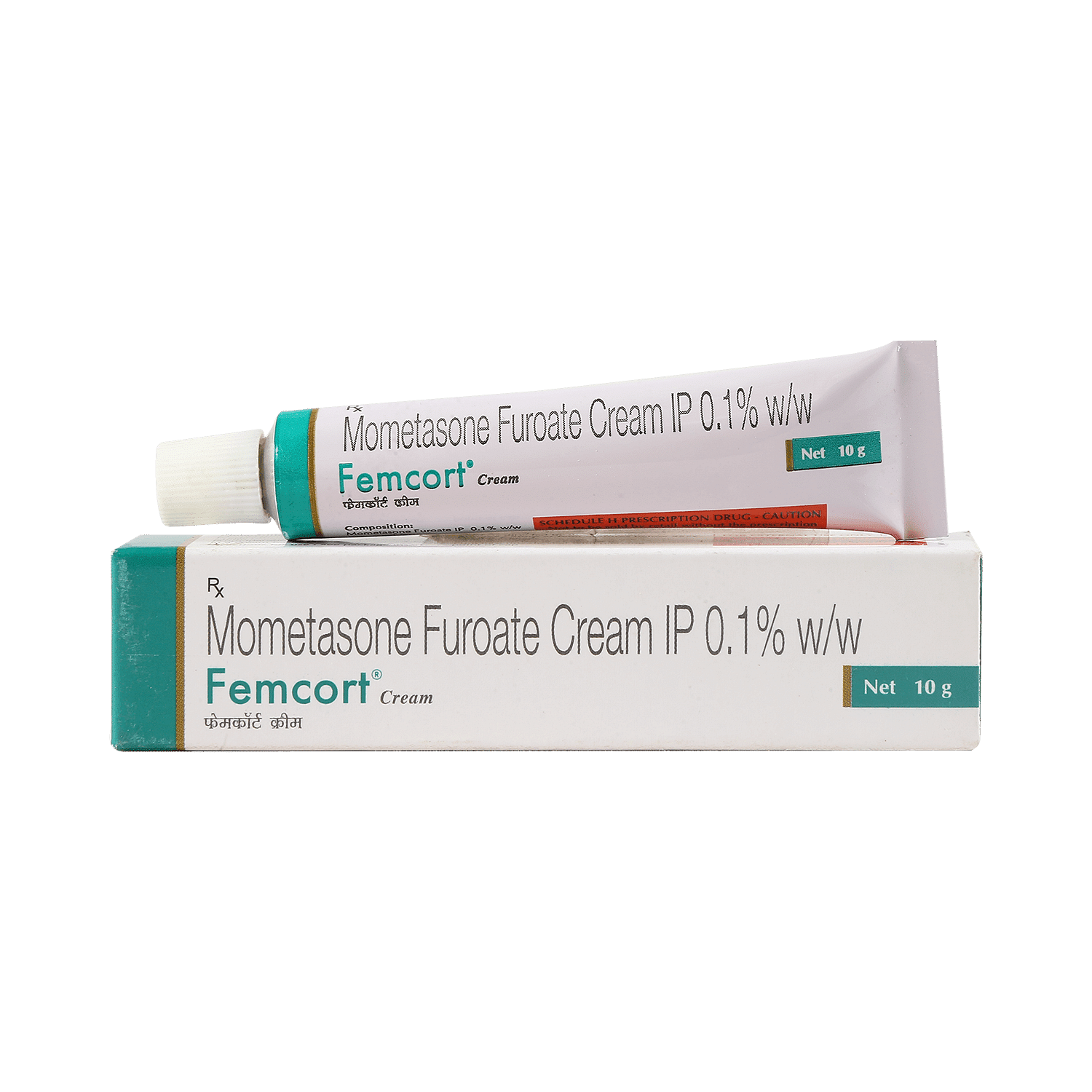
Mytolic 0.1% Cream
Manufacturer
Percos India Pvt Ltd
Salt Composition
Mometasone (0.1%)
Key Information
Short Description
Mytolic 0.1% Cream is a steroid that is used to treat certain skin conditions such as eczema, psoriasis, dermatitis, and rash. It helps reduce symptoms like swelling, itching, and redness.
Dosage Form
Cream
Introduction
You should always use Mytolic 0.1% Cream exactly as your doctor has told you. Do not use the cream or ointment for more than the recommended duration. Spread it as a thin layer onto the skin. Do not cover the area being treated with a bandage or plaster unless your doctor tells you to. You should use this medicine regularly but do not apply large amounts or use it for longer than prescribed. Tell your doctor if your condition does not improve after 2 weeks of treatment. Mytolic 0.1% Cream has a few potential side effects but not everyone will get them. These include inflammation and infection of hair follicle and burning, stinging, and itching sensation at the time of application. Let your doctor know in case you're worried or bothered by these side effects. Let your doctor know about any medical issues you have such as thinning of the skin, any skin infection, broken or ulcerated skin, diabetes, and immune system problems. Also, inform the doctor about other medicines you are taking (particularly steroids). Pregnant or breastfeeding women should consult their doctor before using this medicine.
Directions for Use
This medicine is for external use only. Use it in the dose and duration as advised by your doctor. Check the label for directions before use. Clean and dry the affected area and apply the cream. Wash your hands after applying unless hands are the affected area.
Safety Information
Side Effects
inflammation and infection of hair follicle burning, stinging, and itching sensation at the time of application
Alcohol Warning
No interaction found/established
Breastfeeding Warning
Mytolic 0.1% Cream is probably safe to use during breastfeeding. Limited human data suggests that the drug does not represent any significant risk to the baby.
Pregnancy Warning
Mytolic 0.1% Cream may be unsafe to use during pregnancy. Although there are limited studies in humans, animal studies have shown harmful effects on the developing baby. Your doctor will weigh the benefits and any potential risks before prescribing it to you. Please consult your doctor.
Interacting Medicines
Acarbose Amlodipine Aprepitant Atazanavir
How it works
Mytolic 0.1% Cream is a steroid. It works by blocking the production of certain chemical messengers (prostaglandins) that make the skin red, swollen, and itchy.
Quick Tips
Apply a thin layer onto the skin Do not cover the area being treated with a bandage or plaster unless your doctor tells you to Do not use it more often or for longer than advised by your doctor Consult your doctor if your skin condition has not improved after 2 weeks of treatment
Related Medicines

Metarub 0.1% Cream

Ezoma 0.1% Cream

Momimax Cream

Momactin 0.1% Cream

Momactin 0.1% Cream

Momtop 0.1% Cream

Emcort 0.1% Cream

Mkroma 0.1% Cream

Femcort 0.1% Cream

Momefur 0.1% Cream
Frequently asked questions
What type of medication is Mytolic 0.1% Cream?
Mytolic 0.1% Cream is a corticosteroid, which means it belongs to the class of steroid medicines used to reduce inflammation (redness, swelling) in various conditions.
Can I extend the treatment period for Mytolic 0.1% Cream if it's effective for my child?
No, you should not use Mytolic 0.1% Cream for longer than advised by your doctor, especially in children. Using more than the recommended dose or extending the duration may cause hormonal imbalance in your child, leading to puffiness or rounding of the face and potential delay in growth and development.
What is Mytolic 0.1% Cream used for?
Mytolic 0.1% Cream is a steroid medicine that helps relieve inflammatory and itchy skin diseases, reducing redness, scaling, and swelling associated with these conditions.
How do I use Mytolic 0.1% Cream?
Gently rub Mytolic 0.1% Cream into the affected skin twice daily for a maximum of about 2 weeks. If you do not find considerable improvement within this timeframe, consult your doctor for reevaluation.
Can I apply Mytolic 0.1% Cream on broken skin?
No, Mytolic 0.1% Cream should not be applied on broken skin. It may cause varied side effects that delay the healing process and lead to skin atrophy, potentially worsening the associated condition.
Does Mytolic 0.1% Cream cause local irritation or skin reactions?
Yes, Mytolic 0.1% Cream may cause local skin reactions like burning, itching, irritation, dryness, and hypopigmentation in sensitive individuals, although this is rare. Inform your doctor if you have any history of allergy or reaction before starting therapy with this medicine.
What precautions should I take while using Mytolic 0.1% Cream?
Do not use Mytolic 0.1% Cream on the face and do not extend treatment periods longer than advised by your doctor. Avoid applying a bandage or dressing to the area being treated, as this increases absorption of the preparation and risk of side effects.


